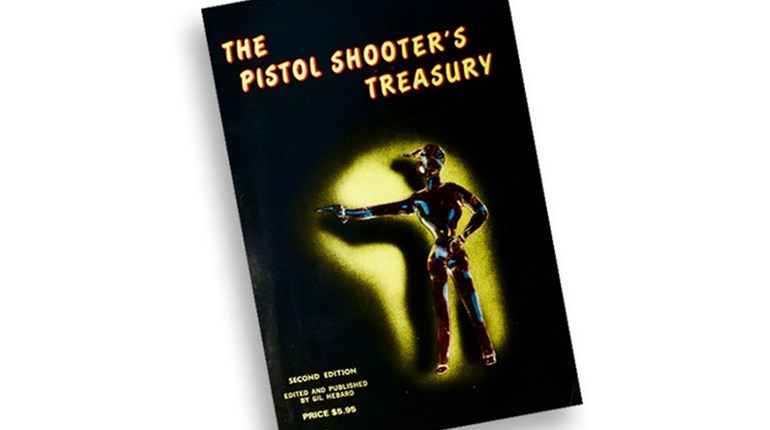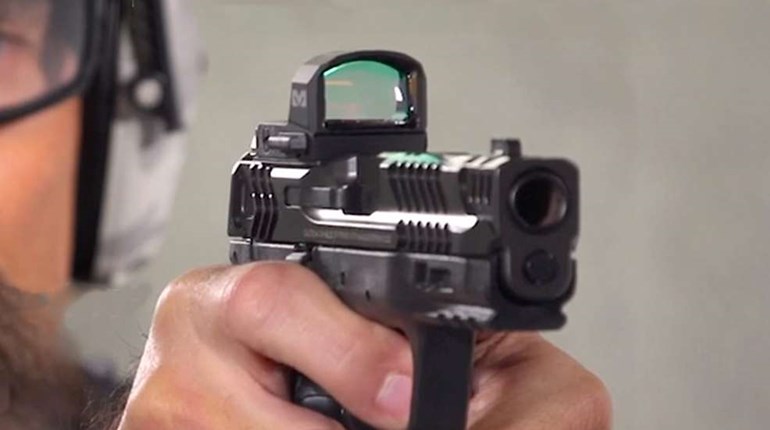
Carry Life returns to a familiar (in some cases, dishearteningly so) topic this time out: our “how do I shoot my carry pistol better” FAQ. From our perspective, the “a” in the acronym stands for “answered,” not “asked,” but the import is much the same: Since the carry arm is the most likely one to be needed in the unwelcome but almost guaranteed delay of any official help, we have an obligation to shoot it with precision in every sense of the word. Getting to that precision is a contested matter, though, particularly with smaller, lighter, carry-class pistols.
You should not ... figure that just any pistol training or background is sound preparation for the potential rigors of defensive shooting with a carry-class firearm.If the hairs on the back of your neck are prickling to the far-off, threatened strains of a “You need to practice more” theme, you’re one-quarter correct. If the hairs on the back of your neck are prickling to the far-off, threatened strains of a “You need to train more with your carry gun” theme, you’re another one-quarter correct.
That’s the bad news. The worse news is that it’s the second 50 percent of what matters. If the whole business is starting to smack of a trick question, we’ll concede the point.
Whatever the score, we posit the correct answer is, “Stop training with more than one pistol, even if the ‘one’ you finally choose isn’t your carry arm.” We recognize that the codicil may seem a compound, string-him-up sort of heresy, to which we reply, “Well, ah, yes.” And you there, with the noose, get back in line: It’s by no means our first such threat. <<Cue Kenneth Mars as the redoubtable Inspector Kemp, inciting the riot in “Young Frankenstein”>>
But our rationale is a simple one: You don’t start drivers out in Lewis Hamilton’s Monaco Mercedes, nor pilots at Reno in, say, Miss America or Rare Bear. You should not, by the same token, figure that just any pistol training or background is sound preparation for the potential rigors of defensive shooting with a carry-class firearm.
So here’s the point: Don’t make these challenges worse by switching from pistol to pistol to pistol.
We see this sort of unintentional technique sabotage quite frequently, and often juuuuust before the aforementioned plea for counsel: A satchel full of pistols arrives, and each in turn gets run through a couple of magazines or cylinders. Hopefully last, a carry arm is unlimbered, too.… As much fun as it may be to shoot through your handgun collection on every outing, the practice will hold you back.
But a little reflection ought to make the problem clear: As much fun as it may be to shoot through your handgun collection on every outing, the practice will hold you back. There are simply too many variables in play: “Deltas” in grip design, power-to-size ratio, sights and triggers/actions are the big hitters, but there are literally gobs of others. And they multiply as the number of pistols you add to the equation increases.
Our recommendation, therefore, is to pick a reliable exemplar that falls somewhere in the middle of your panoply, and shoot it to exclusion for about six months. If it can be your carry arm, so much the better, but there’s a serious case to be made that this is not essential. What it decidedly should not be is some highly optimized variant, no matter the theme, if you will, of the optimization—no unusual sights, no super-tuned triggers, no especially light (or heavy) recoil characteristics, etc.
The goal is a period of relative stasis in your training regimen. By holding factors like trigger press, action type, recoil signature and sight picture constant from session to session, you can focus on true essentials. Once bedrock skills like grip mechanics and press, press, press are working on one pistol, they do indeed become transportable to others.
Conversely, we know of no case—ever—where the reverse has been realized. Such platform-hopping has a poor track record on all but the highest levels of pistol practitioners, and here it re-emphasizes our point: It works precisely because those underlying skills were previously developed, not as a method for developing versatile skills. It’s reassuring to note that no professional teaching is done this way, either—law enforcement agencies and militaries wouldn’t dream of saddling their members with this handicap.
Our experience—and a long record—show that the vast preponderance of people who care enough to go through the rigors of obtaining a CCW do very well indeed in terms of safety and judicious use.A couple of provisos are justified at this point. First, we don’t recommend total abandonment of your carry arm in this period. Just recognize that sound basics are more easily acquired outside of the smallish, lightish handguns we tend to nominate for carry duty. Two guns, though, are plenty. Resist soup-to-nuts shooting sessions with ever fiber of will you can muster. (An anecdote here may help: Long ago, we concluded Glocks were deeply inferior because we didn’t shoot only them for a period as we suggest here. Our teaching obligations finally required that we put everything else “up,” as our Texas pals would say, no matter our likes/dislikes, and focus on that G grip angle and trigger press. What did we discover? Without the enforced differences and distractions that other systems necessitated, the Glock emerged as the fabulous pistol it was and is, and as the intervening 25 years have unambiguously demonstrated. Point taken? In other words, our inability to perform was all on us, and was a technique issue, not a gun issue.)
Next, how much is enough? This varies a lot by individual, and mainly depends on the beginning state of your technique. If this drill is going well, you’re probably good. If you worked on a handgun other than your carry pistol, this is your cue to get back to that carry firearm with serious round count, and watch those skills transfer. Don’t think this means that you’ll take instantly to it or any other pistol that comes to hand, but it probably does mean you will know what to sense within the variables every “new” firearm presents, and can adjust well and quickly.
Also, take a look at this recent “First Gear” column if you’re willing to consider a potentially major shortcut to the transferable skills we’re suggesting can be attained.
We’re absolutely not saying that we see serious or routine blunders. Our experience—and a long record—show that the vast preponderance of people who care enough to go through the rigors of obtaining a CCW do very well indeed in terms of safety and judicious use. But it’s also to their (considerable) credit that so many know their own limitations, and seek to get better still. Keep it up.
Finally, we wouldn’t suggest that multiple handguns are necessarily a problem. Every informed person understands that no single firearm of whatever type can be pressed into just any service for a host of sound reasons, safety chief among them. Nail down sound skills first, and add numbers as interests or needs demand later on.
Now Carry on.


































